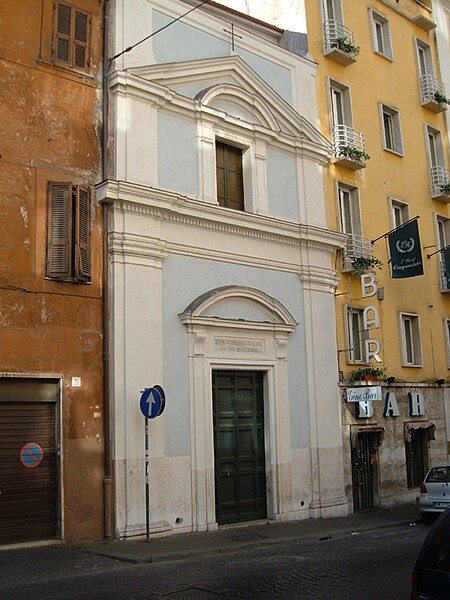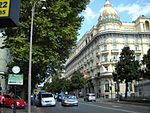San Basilio agli Orti Sallustiani
1682 establishments in the Papal States17th-century Roman Catholic church buildings in ItalyChurches of Rome (rione Trevi)Eastern Catholic church buildings in ItalyRoman Catholic churches completed in 1682

San Basilio agli Orti Sallustiani (Saint Basil at the Horti Sallustiani) is a rectory church in Rome, on via Trevi in the Trevi district. It is dedicated to Saint Basil. The church is a secondary place of worship for the Parish of San Camillo de Lellis.
Excerpt from the Wikipedia article San Basilio agli Orti Sallustiani (License: CC BY-SA 3.0, Authors, Images).San Basilio agli Orti Sallustiani
Via di San Basilio, Rome Municipio Roma I
Geographical coordinates (GPS) Address External links Nearby Places Show on map
Geographical coordinates (GPS)
| Latitude | Longitude |
|---|---|
| N 41.9049 ° | E 12.4899 ° |
Address
San Basilio agli Orti Sallustiani
Via di San Basilio
00187 Rome, Municipio Roma I
Lazio, Italy
Open on Google Maps











